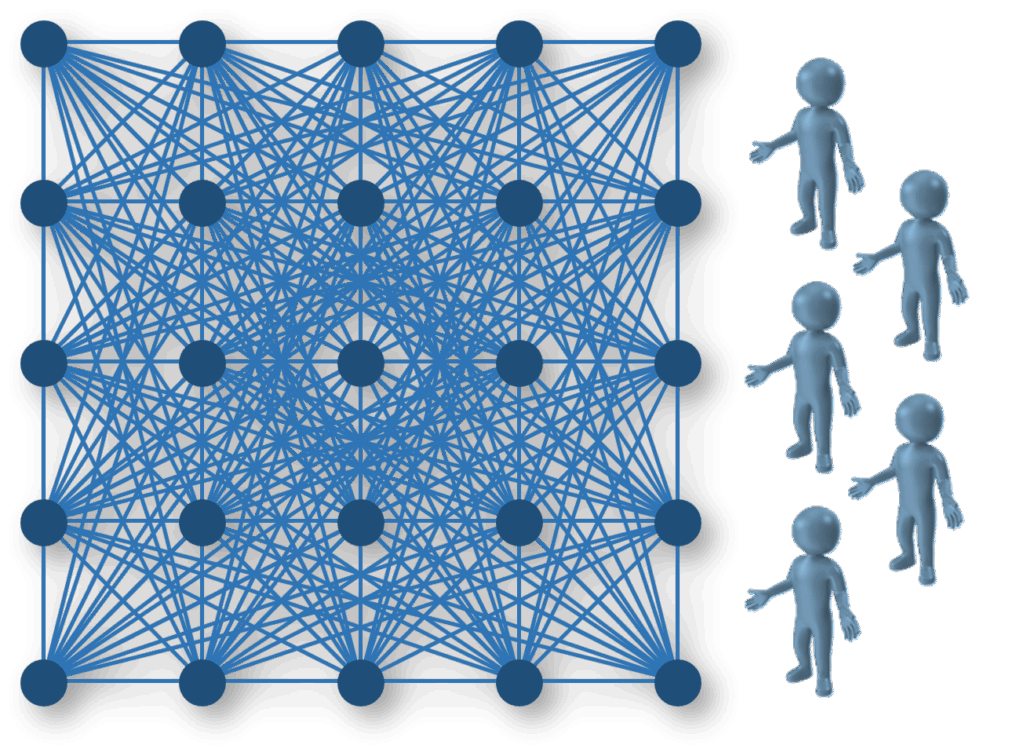Homecare & community care scheduling – how complex can it be?
Creating schedules is the puzzle at the heart of delivering homecare and community care. It sounds simple – assign each visit to a worker – but the level of complexity is surprising. This complexity poses challenges, but also opportunities!
More possibilities than atoms in the known universe!

Unlike a jigsaw puzzle, which only has one possible solution, there are countless possible ways to arrange homecare visits into schedules. Even with a small number of service users and workers, the number of possible permutations can be astronomical:
- With 1 worker and 2 visits there are 2 possible permutations (1,2 or 2,1)
- With 1 worker and 3 visits there are 6 possible permutations (3*2*1)
- With 4 visits the number of possibilities jumps to 24 (4*3*2*1)
- With 2 workers and 5 visits the number of permutations jumps to 720
- With 5 workers and 25 visits, the number explodes to over 368 octillion combinations – that’s 368,406,749,739,154,000,000,000,000,000.
- With 8 workers and 56 visits, there are more ways to arrange schedules than atoms in the known universe
This is what’s known as combinatorial explosion – As the number of workers and visits increases, the number of possible permutations for organising schedules explodes to mind-boggling levels.
Not all schedules are equal – the challenge is to find good ones
With such a vast number of permutations, not all are equal – some of will meet service user and worker needs better than others. Some will make better use of the workforce than others, requiring fewer workers or less travelling. Some may be absolutely terrible.
Schedules need to balance service user and worker requirements, they need to utilise the workforce fairly and effectively while also meeting business needs (ultimately all of these objectives are interrelated and important).
The challenge for planners is to find a good solution. With traditional tools, planners allocate visits to workers until they’re happy – or runout of time. They don’t have the capacity to explore the vast number of other possibilities.
How AI Dimension Optimisation helps
When there can easily be more possible permutations for creating schedules than there are atoms in the universe it isn’t possible to use approaches which simply check all of them – this would take millions of years, even for the most powerful super computers. We do see this approach used sometimes, but the results are poor as these systems are only able to evaluate such a limited number of possibilities.
More sophisticated approaches are needed. AI Dimension Optimisation uses highly specialised Artificial Intelligence to evaluate a vast number of possibilities to create schedules which better balance service user and care worker needs and make effective use of the workforce.
AI Dimension Optimisation utilises multiple strategies to produce optimised schedules, including machine learning which learns and guides optimisation toward the best solutions.
Results from Optimisation often surprise people
Using traditional tools planners are only able to create one set of schedules based on what seems workable – They aren’t able to explore the vast number of other ways they could have created schedules. As a result, they just aren’t aware of how much better things could be. Donald Rumsfeld’s “unknown unknowns” comes to mind.
This is why the results from AI Dimension Optimisation can be so eye-opening – often requiring significantly less travelling and fewer shifts/workers while also improving quality and stability of planning.

Contact us!
You can contact us using the attached form. You can find the direct contact information of the persons on the Contact page.
